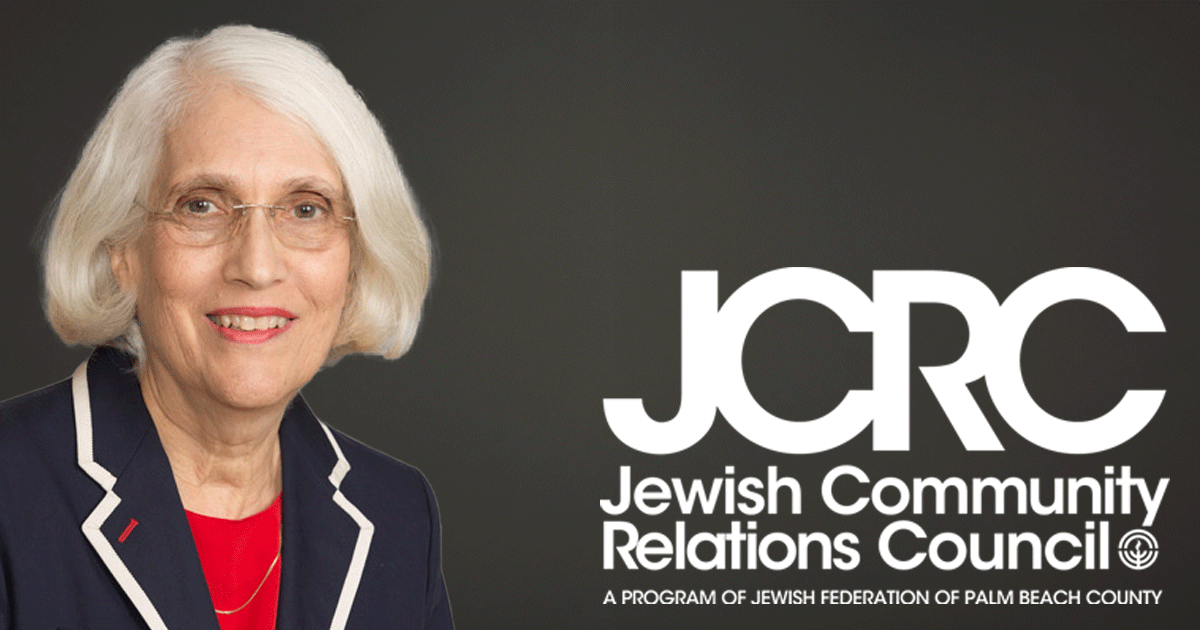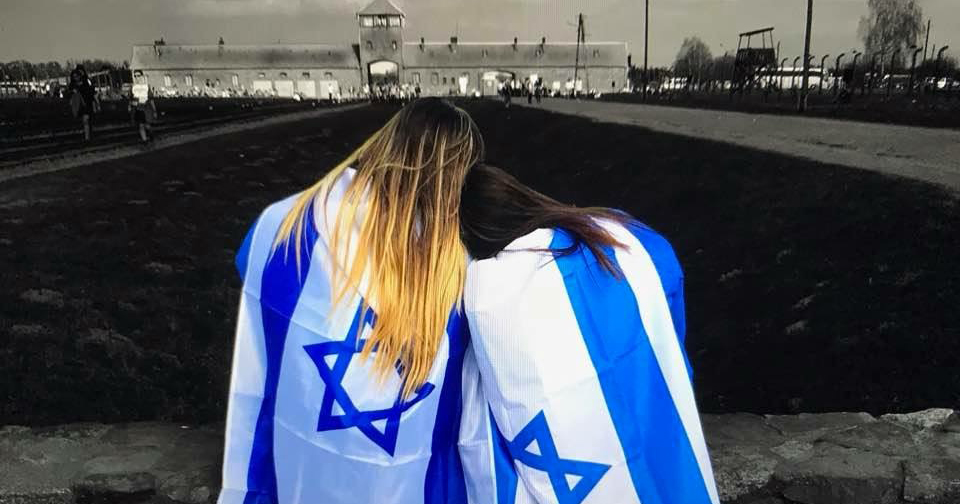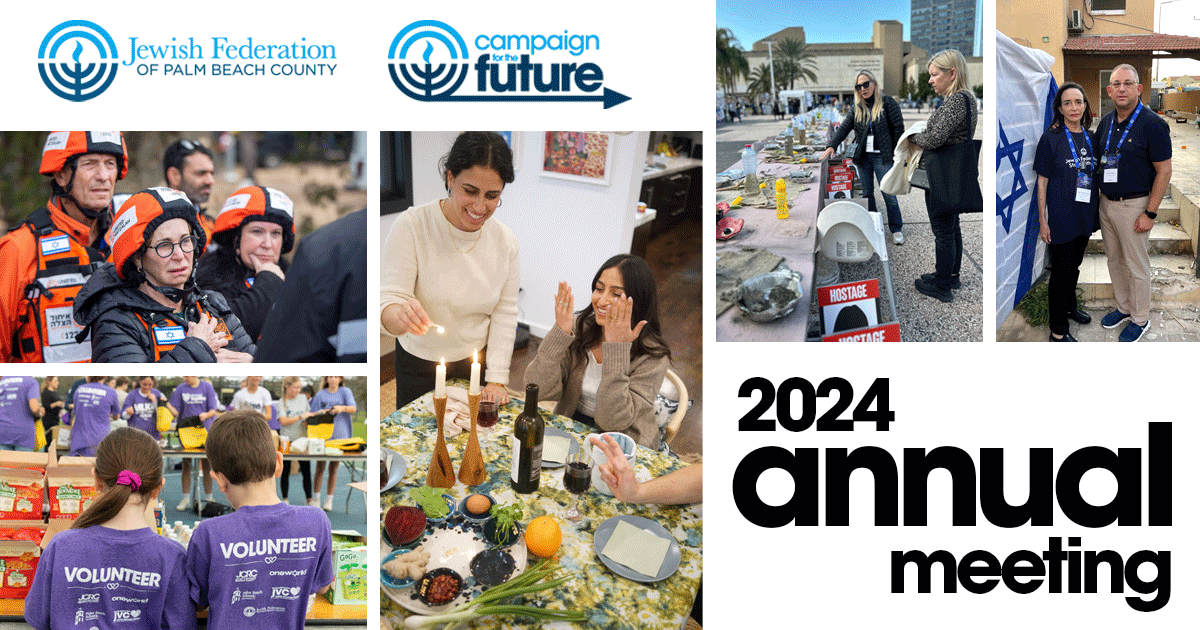Reflecting on a Mission to Ethiopia
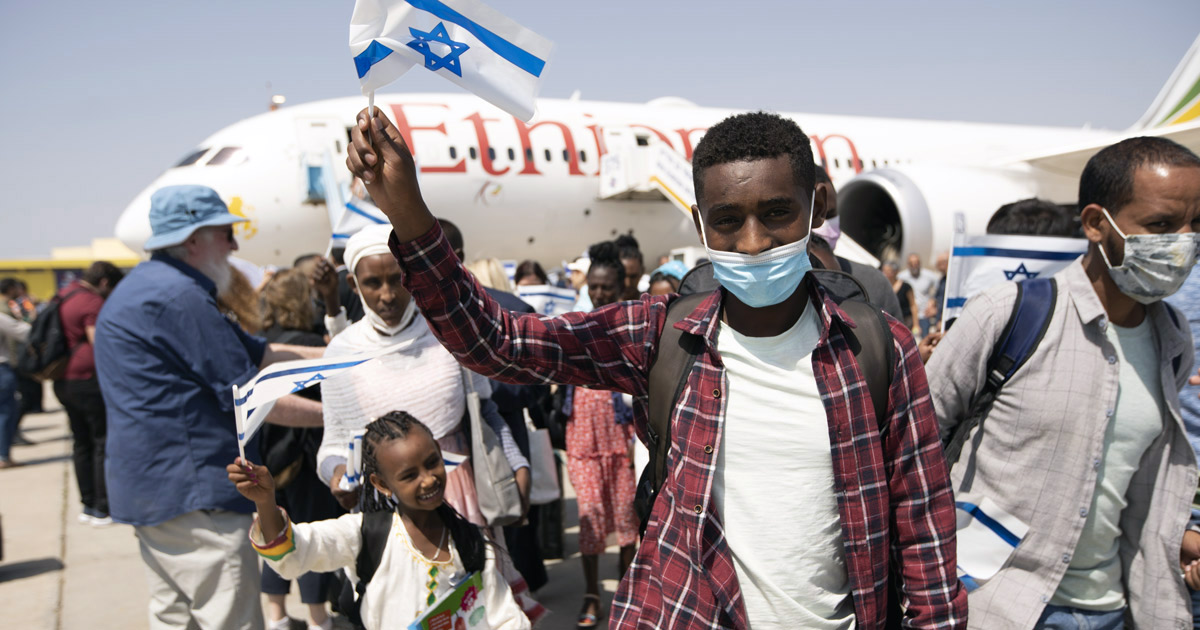
By Melissa Arden
Vice President, Community Strategy & Planning
Jewish Federation of Palm Beach County
June 2022
In late May, I had the incredible opportunity to represent Jewish Federation of Palm Beach County on a mission trip to Ethiopia with Jewish leaders from around the world.
Our group learned about the struggles of the Jewish community of Ethiopia and their yearning to be reconnected with family in Israel. We also witnessed as these Ethiopian olim (Hebrew for immigrants), were airlifted to Israel as part of Operation Zur Israel 2 (Rock of Israel).
The Jewish Agency for Israel, Jewish Federations of North America and our Federation are supporting a series of airlifts over the next six months which bring a total of 3,000 olim by plane to Israel to reunite with family, many of whom previously arrived in Israel during Operation Moses in 1984 and Operation Solomon in 1991.
I recall months ago, leadership on our Federation Israel and Overseas committee unanimously approved a special allocation to the Jewish Agency to support this critical effort. Little did I know then that I’d have the life-changing opportunity to witness the magnitude of our community’s impact in action.
I returned home from this transformative experience with immense pride for our community, and the collective power of global Jewry, having seen the extraordinary humanitarian efforts to care for the community there.
Here is a recap of my four-day mission:
Day 1
My journey started on a flight from Miami to Addis Ababa, Ethiopia, where the mission officially began as we flew to Gondar, Ethiopia. Our group of nearly 70 was welcomed by the mayor, during an Ethiopian ceremony filled with music and dancing. Once home to Ethiopian royalty, Gondar is now extremely poor, with dirt roads and limited luxuries.

We made our way in our convoy of Jeeps to Ataye, where the Jewish Community of Gondar had settled for ages. Along the way we passed children running along the convoy and homes made of branches and mud with corrugated metal roofs. There we visited the synagogue that has been renovated and preserved, although no Jews remained in the area having left during the Operations Moses in 1984 and Solomon in 1991. Those who remained had moved to central Gondar with hopes of making Aliyah (immigrating) to Israel and reuniting with family.


As we sat on the floor of the synagogue, we learned from Micha Feldman, the “Abba of Ethiopian Aliyah,” about the history of the Ethiopian Jewish community, and the intricacies of immigration from Ethiopia.
We then headed to an observation point in the village of Kosoya that overlooked a mountainous landscape with Sudan in the foreground. There, Sigal Kanotopsky, a professional from Jewish Agency for Israel, shared her family’s story with us. As a child in Ethiopia, every Shabbat her parents would tell stories of “Yerusalem,” and their dream, along with the entire community, to go to Israel.

Then, one day in the early 1980s, her parents heard a rumor that if they walked to Sudan, they might be able to get to Jerusalem. This rumor was enough to mobilize her parents as “it was their destiny.” So, they set off on a grueling trek by foot to Sudan, during which, one of her five siblings died. After waiting six months in a refugee camp in Sudan, the Mossad brought them to Israel as part of Operation Moses, which brought a total of 8,000 Ethiopian Jews to Israel via Sudan.
Sigal’s story is similar to so many other Ethiopian Jews. It is the story of hope and sacrifice. As I stood looking out at the ridges that painted the landscape, I thought about all of those families that set out at the same time — with dreams of making it to Israel, including 4,000 people who were lost along the way.
We paid our respects to those individuals at the Jewish Cemetery where we gathered to say the Mourner’s Kaddish.

Day 2
We began our day at the Jewish Community Center in Central Gondar. Made of corrugated metal painted blue and white, with dirt floors and rooms without doors, the center provides the opportunity for the community to gather, pray and learn (much like our local JCCs). Yet, at this center, thousands of Ethiopians gather in hopes of making it to Israel.
There, we joined the congregation for Shacharit services (morning prayer). Dressed in white for the special occasion, women and men were separated for the traditional services.

I could only see the eyes of the women since their mouths were covered with a Covid facemask. That said, their eyes told the story of hope and faith and the children approached us without fear, as if they knew we had a special connection. At the end of the service, we all sang Hatikvah (Israel’s national anthem meaning Hope). Tears filled my eyes with the weight of the moment.
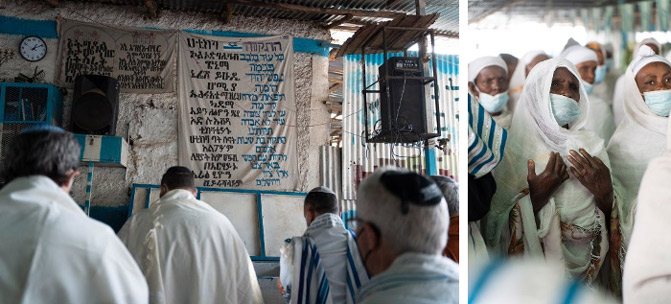
After the service we learned about the process families will take to be one of the 3,000 approved to make aliyah (immigration) to Israel. We were welcomed into the home of Demeke, a father of five, living in Gondar. Demeke’s home consisted of one small room with a bed and a couch. This room is where he and his wife, and 5 children live. Everything else is communal: water, oven, etc. Demeke’s story mirrors so many who are awaiting approval to go to Israel.


Speaking through an interpreter, Demeke, shared that 25 years ago his parents had left their rural Ethiopian village, traveling to Gondar with the hope of making aliyah. Fifteen years ago, Demeke’s parents alone qualified and went to Israel. He hasn’t seen them since. His father lives in Beit Shemesh near Jerusalem and is now very sick.
The separation has become the narrative of this family, and thousands of others who’s every day face the reality of years, or decades separated from their family. Each night as they put their children to bed, they tell the story of longing for Yerusalem and pray that one day they will be reunited with their family. During our visit, we learned fantastic news: Demeke’s long wait will soon be over; he and his family have been approved as part of Zur Israel 2.
Later, we visited the office of the Jewish Agency for Israel and met with some of the families we would accompany on the flight to Israel. They had their belongings in tow, limited by the amount of luggage they could bring. I wondered what these families packed, and what they left behind for good.

After the emotional day, we flew back to Addis Ababa. Once there, we traveled to the Israeli Embassy compound where we met with Ambassador Elhin Adamsu and learned about Operation Solomon in 1991. There, Micha Feldman shared the heroic effort to rescue 14,000 olim and airlift them to Israel in just 36 hours. We concluded our day by meeting Pnina Tamano-Shata, the first Ethiopian-born woman to hold a seat in Israel’s Knesset.
In only two days, my world felt transformed and renewed as I witnessed such an inspiring illustration of how our global Jewish community cares for each other, just as is central to our mission at Federation and the reason why I’m so honored to work here. We are providing the opportunity for each child to help write the future of Israel, just like Minister Tamano-Shata.
Day 3
I woke with excitement thinking of the importance of the day ahead. Today was the start of Operation Zur Israel 2.
The back story: in November 2015, the Israeli government announced its intention to bring a new wave of Ethiopians to Israel. In August 2016, the Israeli government passed a resolution for the family reunification of members of the Ethiopian Jewish community who have Beta Israel ancestry (Operations Moses & Solomon) or lineage, allowing those who have first-degree relatives in Israel to make aliyah along with their unmarried children. Once approved, the Jewish Agency prepared to help, made possible with the support of Federation and our community.
In Ethiopia, the Jewish Agency created the necessary infrastructure to implement the Aliyah process, and in Israel prepared and bolstered its comprehensive absorption services to ensure successful integration into Israeli society. A total of 2,325 Ethiopian Jews made Aliyah from 2016 through 2020. At the beginning of October 2020, the Israeli cabinet approved the immigration of 2,000 more Ethiopians by Spring 2021 as part of its family reunification program (Zur Israel 1), including some who had been waiting for more than a decade. Despite the harsh conditions (and at times military conflict in the region), they maintained their hopes of making aliyah, holding on to their Jewish identity and continuing their Jewish rituals.
On this morning, we boarded a plane to join 180 Olim as part of Zur Israel 2, where over the next six months, a total of 3,000 Ethiopians are expected to be welcomed to Israel.
I sat next to two young Ethiopian women who are part of family of 8 children on their way with their parents to reunite with family and begin a new life in Israel. Although we were not able to communicate with one another verbally, I felt their fears, as well as their hopes and dreams. As the plane took off leaving Ethiopia in the background, we instinctively grabbed each other’s hands. Moments like this make it very clear why I do what I do, and why Federation does the incredible work it does single day.
Nearby sat an older couple. The wife had her head on her husband’s shoulder for the majority of the flight. Through an interpreter we learned that she was scared being on plane for the first time and fearful of leaving family behind.
You could feel every emotion on this flight: hope, fear, excitement, and uncertainty.

It was the shortest four-hour flight I’ve ever taken. Partially, it was the children who kept us entertained. Like any 5- and 7-year-olds, they played with stickers and iPhones belonging to other mission participants, oblivious to the enormity of the day… and the struggles of their parents to get there. I thought of my own children and the opportunities they have just by circumstance. Now, these children will have the same opportunities in Israel- thanks to caring communities like ours, joining across the globe.
As the pilot announced that we’d be landing, the excitement became palpable. We broke out into song: first the Shehecheyanu (the prayer which celebrates special occasions and gratitude to G-d), then together the whole plane clapping loudly and chanting – Am Yisrael Chai (The People of Israel live).
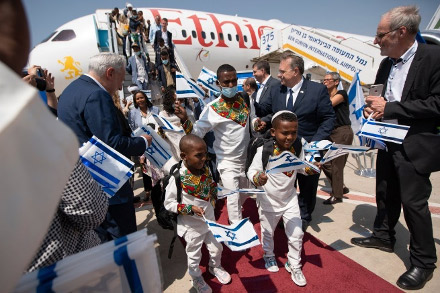

Day 4
Waking up in Tel Aviv was different than any other time I had experienced. For the first time, I saw Israel through the eyes of new olim. It was a different feeling “coming home” this time to Israel. On this day we learned about care for the new Olim once they get to Israel. The women I met on the plane were starting their absorption and integration in the town of Beer Sheva. Coincidentally, that is where we visited. There, we learned of the two-year absorption process that they would undergo; intensive Hebrew and other important skills to integrate into Israeli society, as well as formally converting to Judaism. They will also receive funds to purchase housing so they can be set up for a successful life in Israel.
At the Jewish Agency absorption center, we met with youth that had made aliyah from Ethiopia merely 18 months ago. These teens had nearly mastered Hebrew in this short period of time and shared about their new lives in Israel. One young man shared he is studying mechanical engineering!
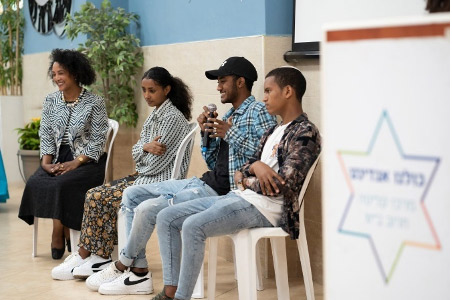

At that same absorption center, we met with new Olim from Ukraine. The significance of these two groups making their start together in Beer Sheva highlights the importance of Israel to the Jewish people. Whether fleeing conflict in Ukraine, or reuniting with family after decades of waiting, Israel will always provide hope and safety for the Jewish people. And Jewish communities like ours in the Palm Beaches will always step up to support them.
Since the start of the Ukraine conflict, for example, our Federation has raised more than $2 million to support these imperative relief efforts.
Nearly 2,000 years ago, the ancient Rabbis declared, “Kol Yisrael arevim zeh bazeh – all Jews are responsible for each other.”
For generations, the collective work of Jewish communities across the globe have made those words reality at home in the Palm Beaches and through our work with Israel and across the world. Together, the collective power of global Jewish communities helped to build the Jewish state; fought to free over a million Jews from the Soviet Union and helped them start new lives in Israel, the United States, and abroad; helped provide humanitarian relief to Ukrainian refugees; and together, brought Ethiopian Jewry – a community separated from the rest of the Jewish people for millennia – home to Israel and help them integrate into Israeli society.
These are just a few valuable examples, and another illustration of Federation’s funding at work, supporting our global partners at the Jewish Agency and others on the ground.
As I boarded my flight home, I met young shlichim (emissaries) heading to spend their summer working with American children at Camp Coleman in Georgia. It was a beautiful, fitting end to an emotional mission. It was clear that this incredible experience didn’t end when the plane landed in Israel – rather that is the beginning of the next phase of the journey.
It is imperative that our children understand the importance and significance of Israel to them and to their people, and to never take this gift for granted.
I am grateful for our incredible leadership in the Palm Beaches who continue to prioritize that we invest in the Jewish community both locally, in Israel, and around the globe.

Melissa’s trip was covered by several news media outlets:

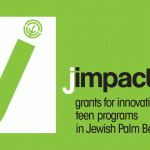 Previous Post
Previous Post
